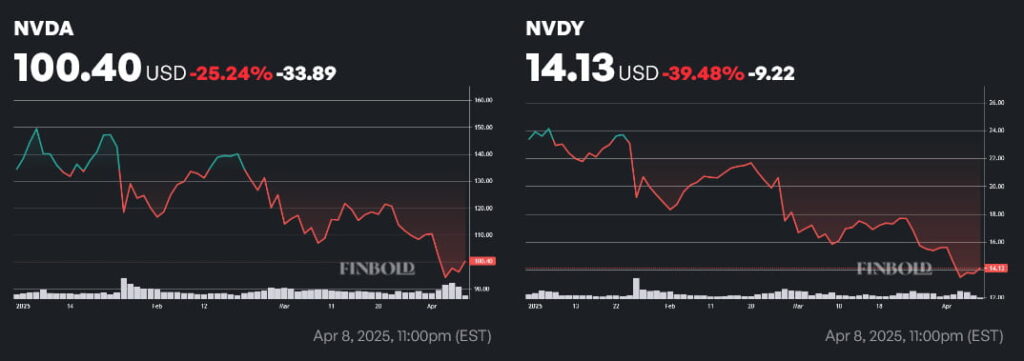The YieldMax NVDA Option Income Strategy ETF (NYSEARCA: NVDY) is one interesting investment vehicle.
By utilizing a covered call strategy (mixed with some short-term treasury holdings), this Nvidia exchange-traded fund (ETF) aims to accomplish two goals: offer exposure to the high-flying chipmaker, while also ameliorating the greatest drawback of Nvidia stock (NASDAQ: NVDA) — a lack of dividend payments.
Nvidia pays out a meager dividend of $0.01 per share on a quarterly basis. One unit of NVDA stock, therefore, provides $0.004 in dividends on an annual basis. In contrast, NVDY paid out $18.51 per share in 2024.
However, with the market in the midst of a downturn, YieldMax’s intriguing fund has crashed. At press time on April 9, Nvidia stock was trading at $100.40, having lost 25.24% in value on a year-to-date (YTD) basis. In contrast, NVDY was changing hands at a price of $14.13, with prices having receded by 39.48% in the same timeframe.

But — and this is a big but, there’s one additional factor to consider. Let’s see how the two stack up against each other when Nvidia ETF’s distributions are factored in.
Distributions make Nvidia ETF an appealing investment despite outsized losses
Since the beginning of the year, NVDY has made four distributions, ranging from $0.78 at the low end to $1.6 at the high end. In total, the Nvidia ETF has made payments amounting to roughly $4.13 per NVDY share thus far in 2025.

Once those payments are factored in, NVDY’s losses stand at 21.79% — highlighting its appeal as opposed to holding Nvidia stock directly.
Featured image via Shutterstock









